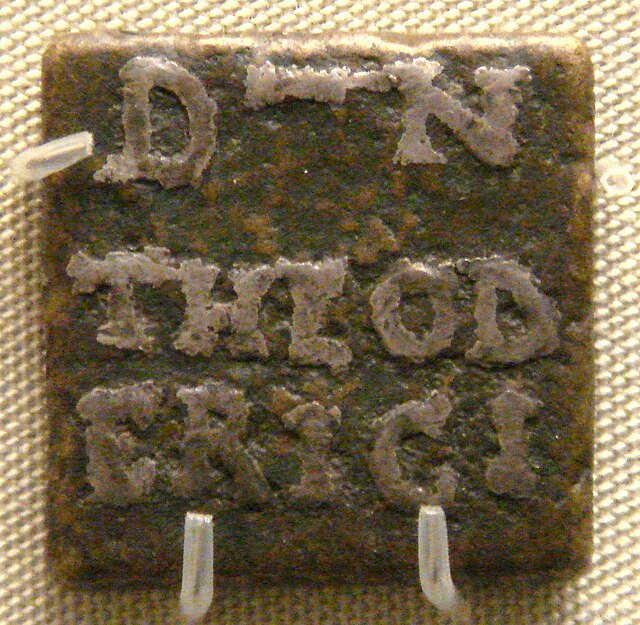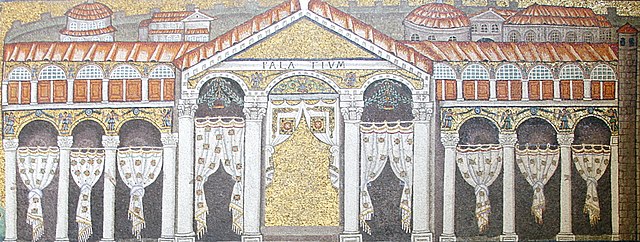Theodoric the Great, also called Theodoric the Amal, was king of the Ostrogoths (475–526), and ruler of the independent Ostrogothic Kingdom of Italy between 493 and 526, regent of the Visigoths (511–526), and a patrician of the Eastern Roman Empire. As ruler of the combined Gothic realms, Theodoric controlled an empire stretching from the Atlantic Ocean to the Adriatic Sea. Though Theodoric himself only used the title 'king' (rex), some scholars characterize him as a Western Roman Emperor in all but name, since he ruled a large part of the former Western Roman Empire described as a Res Publica, had received the former Western imperial regalia from Constantinople in 497 which he used, was referred to by the imperial title princeps by the Italian aristocracy and exercised imperial powers recognized in the East, such as naming consuls.
The Ostrogothic Kingdom (in yellow) at the death of Theodoric the Great (AD 526)
Bronze weight, inlaid with silver, with the name of Theodoric, issued by prefect Catulinus in Rome, 493–526
Mosaic depiction of the front of Theodoric's Palace on the upper part of the south wall of the nave of San Apollinare Nuovo in Ravenna. Theodoric and his court were removed from the image by the Eastern Romans.
The Mausoleum of Theodoric in Ravenna
The Ostrogoths were a Roman-era Germanic people. In the 5th century, they followed the Visigoths in creating one of the two great Gothic kingdoms within the Western Roman Empire, drawing upon the large Gothic populations who had settled in the Balkans in the 4th century. While the Visigoths had formed under the leadership of Alaric I, the new Ostrogothic political entity which came to rule Italy was formed in the Balkans under Theodoric the Great.
The Mausoleum of Theodoric in Ravenna, Italy
Ostrogothic bow-fibulae (c. 500) from Emilia-Romagna, Italy
The Concesti helmet was found among the burial goods of a probable Ostrogothic Prince. Hermitage Museum.
Ostrogothic belt buckle, Pavia Civic Museums








